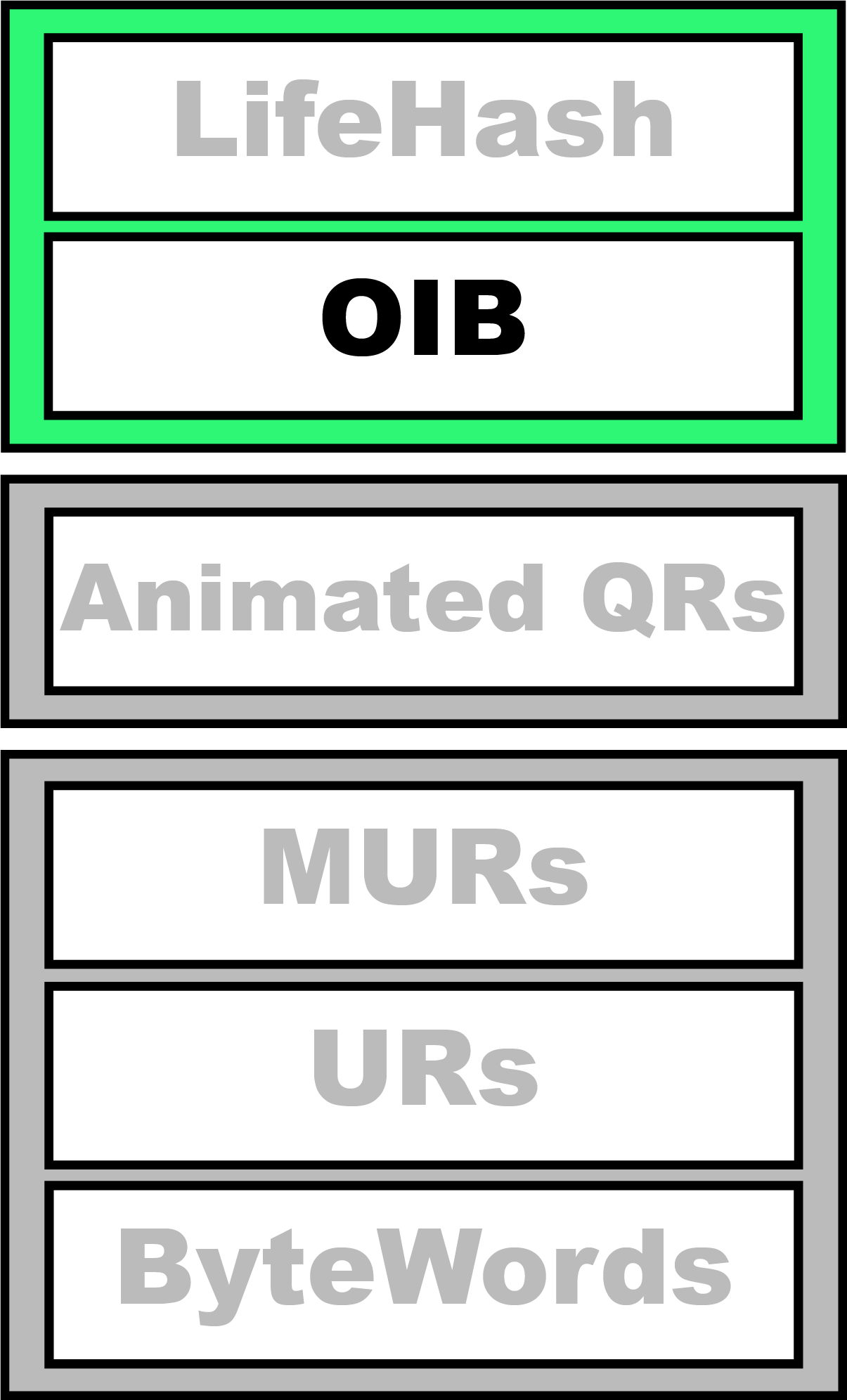Overview
The Object Identity Block (OIB) is a methodology for making a digital object immediately recognizable to users (or at least as recognizable as possible given the challenges of representing large digital numbers).
Why is OIB Important?
User Error is a prime cause of asset loss. Fraud, including phishing, is another. Both of these threats tend to result from the inability of the average user to distinguish digital assets from each other, since the private key (or seed) used to secure one asset can look much like the private key (or seed) used to secure another.
The Blockchain Commons Object Identity Block (OIB) seeks to resolve that problem by providing several hints, such as a LifeHash, an abbreviated digest, and a human-readable name that a user can put together to better identify a digital object.
How Does OIB Work?
As discussed in “BCR-2021-002: Digests for Digital Object”, an OIB can consist of up to six elements:

- LifeHash. This is a visual hash for the object, providing it with sight-based identification. Our LifeHash pages provide more details on their creation and usage.
- Icon. This is an icon for the type of object. We have standard icons that we use for seeds, public keys, private keys, and addresses. Though interoperable icons would be great, the most important thing currently is consistency within an application.
- Abbreviated Digest. We specify ways to create digests for specific objects. (Also see our “Creating Digests” page.) We then suggest using a seven-character abbreviation of that digest when shown to users.
- Human-Readable Name (optional). This could be a name created by the user, but if a user hasn’t yet created a name, we suggest auto-assigning one. Gordian SeedTool does so by identifying the color of the LifeHash, and then adding on two Bytewords.
- Additional Icons. These can reference object subtypes. In particular, for seeds and keys, we suggest including the master fingerprint for the seed and its Lifehash, as those can remain consistent even when another app doesn’t have complete private information on a seed. See LifeHash Creation for some notes on creating them and LifeHash test vectors for some examples of what they look like.
- Additional Metadata (optional). Other information could include data on what an asset contains or protects, notes left by the user, or anything else.
Videos
|
LifeHash in Technology Overview:
|
OIB in Technology Overview:
|
Links
Intro:
Developer Resources:
- “BCR-2021-002: Digests for Digital Objects” (Blockchain Commons Research)
- Best Practices
- Test Vectors
- LifeHash Developer Docs
